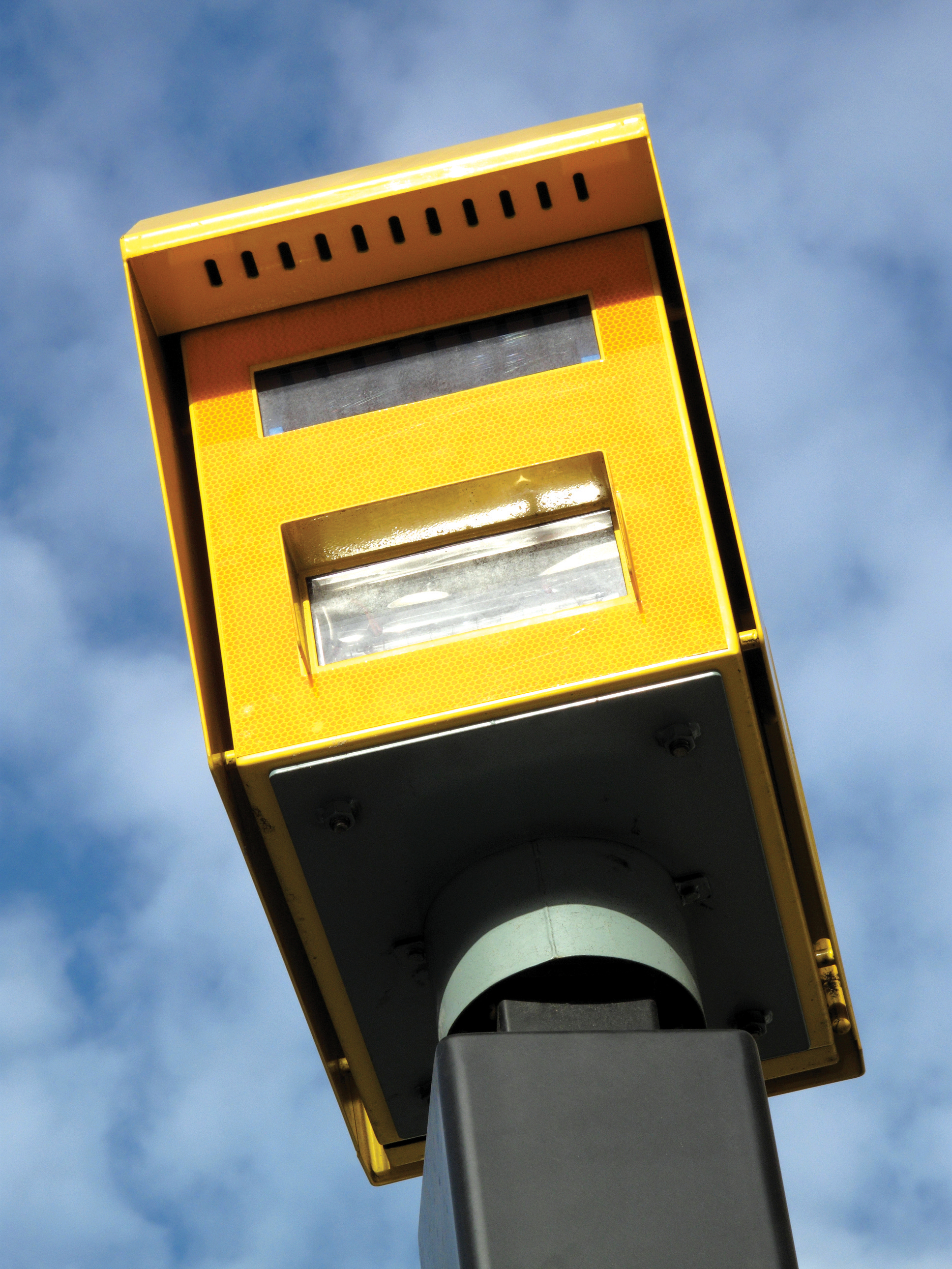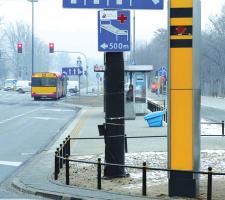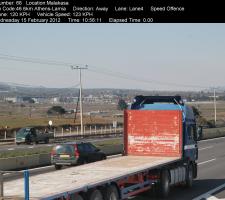
Friend or foe: Global standards are possible but would politicians and the public accept them?
Jason Barnes speaks to leading figures from the automated enforcement sector about whether a truly international standard for automated enforcement systems is necessary or can ever be achieved.
Recent reports of further press controversy in the US over automated enforcement (see ‘Focusing on accuracy?’, in Jan Feb) ITS International raise again the issue of standards and what constitutes ‘good enough’ in terms of system accuracy and overall solution effectiveness.Comparatively, automated enforcement has always experienced something of a rough ride in the American mass media. This flies in the face of research which has shown that although individual citizens there, when asked, profess support for the use of safety cameras to protect against offences such as speeding and red light running, there remains a perception in general that public opinion is against the concept.
Several past features in ITS International have discussed how to improve the robustness of the argument for automated enforcement. Chief among the solutions put forward by industry observers is honesty and transparency in the business case. Using enforcement as a stealth revenue raiser is unfair on the concept and the technology; all too often it is the technology which gets blamed for poor strategy decisions. This is ironic, in that the technology itself is often subject to tests of fitness for purpose which far exceed any applied to policy.
One could regard the contempt or malice directed at automated enforcement systems as an endorsement, in the sense that if they weren’t so capable they wouldn’t do so well at the tasks put before them. Challenges to systems’ effectiveness would appear to give rise to doubts over that, although as ‘Focusing on accuracy?’ notes the recent ‘technology’ issues in New Jersey were more to do with incorrect amber phasing than with camera systems.
A technology cannot in and of itself be expected to be able to guard itself against poor or nefarious installation or against
maintenance failings. Nevertheless, robust standards should do much to protect enforcement systems against accusations of their wrongdoing.
Bewildering choices
But which standard(s) to adopt? In some regions of the world there are as many standards as there are countries, although there is a tendency for developing countries and those which have been rather slower to adopt automated enforcement to ‘borrow’ from others. Each of the established sets of standards has been defined to a locally preferred degree of thoroughness and rigidity. They vary widely and are not without criticism. Some are seen as too lax. Others, such as the UK’s Home Office Type Approval (HOTA) are regarded as being something of a ‘gold standard’ but the homologation process is seen to lack bandwidth, with the result that a system can take several years to be approved for deployment.In an environment where the development of electronic systems continues at a ferocious pace, this makes poor sense in terms of potential obsolescence; it has led many leading international suppliers of automated enforcement systems to treat HOTA as an irrelevance and look instead to use other well-regarded but more easily accessible standards – those from the Netherlands and Germany have found favour. The US, meanwhile, continues to struggle to define a workable – that is to say, a suitably rigorous and respected – national standard.
Solutions are needed and the idea of a global standard seems to gain and lose favour cyclically.
So where do we stand now?
Links in the chain
“You have to consider the three main elements of enforcement: detection, capture and the evidential value chain. If any one of these is unreliable then you have a problem. For example, take the image capture element: if you have a poor-quality camera, you might achieve 100% detection but you won’t achieve a 100% capture rate. Of course the evidence must also be tamper-proof.
“Detecting 100% of events would be the optimum for road safety, although it might not be politically or publically acceptable to prosecute every offender. That opens up another debate about fairness but from a technical point of view you should always strive for the 100% solution.
“Do I think international standards a good idea? Honestly, yes. Because you need to be fair to the driver so the systems have to be reliable, accurate and compliant with the local laws. But you have to account for issues beyond the technology. Many Eastern European countries now moving to deploy automated enforcement ask for NMI/PTB accreditation but the systems still need to be adapted to meet the requirements of local law. Some countries might have a zero-tolerance strategy on red light running, for instance, while some allow half a second’s grace; speed enforcement might allow a 5% or a 10% margin. So it depends what you mean by ‘global certification’.
“I certainly think standards help both suppliers and the authorities procuring these systems and services as it provides a greater element of fairness to the market and simplifies the initial tender stage for all parties. And if you have legitimate, accredited testing organisations and appropriate regulations, then certification from your own country should be acceptable around the world.
“It would also increase competition because more companies would be willing to compete for tenders, and that would bring prices down. I think there would be greater public acceptance of internationally certified systems because they wouldn’t then be seen as subject to the vagaries of the local enforcement agencies. These systems have been developed to enhance road safety and have been proven to do so, so the technology should never be configured in a way to simply raise money for the local authority. If all systems had to comply with the same stringent regulations, then the reliability of these important services would increase.
“That comes back again to the issue of fairness; international standards are feasible in theory but they require political support to establish and to apply them”
The good and bad of it
“Any discussion of enforcement operations and the relevant standards has to look at why they exist in the first place,” says Geoff Collins of“Mine’s a slightly UK-centric view but familiarity with HOTA has pushed me to be a greater supporter of it because of its rigour. Without that, there’s the opportunity to push through the homologation process technologies and processes which are ‘almost right’; HOTA isn’t just about technology but other checks and balances too which make up a whole ‘system’.
“I think it’s too simplistic to assume that because there are international standards for some things that a standard for enforcement can also readily be achieved. Quality assurance standards such as ISO 9000 for example are more objective whereas the law is very black and white. The law can also change, and not necessarily for apparently logical reasons. As it stands, HOTA in the UK has primary legislation support, which I think would be compromised if we were to implement other standards. I don’t view HOTA as a bad barrier to entry, therefore. I see it as a sensible barrier and I can see that it would be very hard to gain acceptance for an international standard in the UK, because how do you gain consensus on system configuration and operation? What becomes, in performance terms, the ‘acceptable average’?
“I can see logic to the arguments about the economies of scale which would result from global standards but there are significant pitfalls and obstacles. We can’t even agree a standard for number plates, which would allow a vision-based system to look for known constants. You can’t afford to have a small niggle in a system which comes back to bite you two or three years down the line when hundreds of thousands of people have been materially affected and significant sums of money have to be reimbursed.”
“That means, to me, that an international standard would necessitate some form of dilution. It would either have to be very general, in which case it would be too porous, or very specific, in which case it would be too unwieldy given the wide variety of systems out there. The idea of using testing houses to carry out a ‘broad sift’ of proposed systems also runs into difficulties because of differing national requirements. In Scandinavia, for instance, a violation is only valid if a clear image of the driver has been obtained. That’s not so elsewhere. And what happens if a country such as the UK suddenly decides it needs a new encryption standard – how long does that take to filter back through to the international standard? A global standard is a nice idea but it’s fraught with difficulties. You also have to cope with the rapid pace of technological change, and I worry that by trying to somehow speed things up we’d only end up slowing things down.”
HOTA get hotter… potentially
There are, notes“Those changes, in real terms, will take a process which has been taking up to five years – HOTA – and compress it down to 18 months but without loss of integrity,” says Harriss.
He professes to be a keen supporter of international standards.
“The UK, where I’m from, is a member of the European Union, which has a Commission which is responsible for all manner of law-making at a European level. It’s absolutely right that we should be moving to a European standard.
“It makes commercial sense but from a policing standpoint it’s also more sensible because you’ll end up with something that has the confidence of the whole of Europe which is faster to get into service at the roadside.
“We can discuss a global standard but while countries such as China and Australia might welcome something which will make it easier to sell products internationally the US is always going to want to do its own thing. And in terms of dilution of excellence I think a global standard would be a step too far. The burden of proof varies too widely from country to country as it stands at present. There’d be a monumental task of trying to align many countries’ national law with international law which I think would simply be impossible in the current climate. Who takes the global lead – who’s the ultimate arbiter? The UN, perhaps? I can’t see who’d readily take on the task in a way which would be agreeable to all concerned. And even if you were to declare a global standard it doesn’t necessarily mean that people will accept or use it. You only have to look at the automotive sector to see that there are standards within standards. The ‘same’ car which sells in Europe often has to have quite a number of changes to make it legal for the US market, for instance.”
“A European standard, though, is probably achievable and more politically acceptable, and I think a lead could be taken at the Commission level. My ideal, in the present climate, would be NMI-style testing houses doing basic checks with national government agencies giving the final sign-off.”
Battling with perceptions
James Tuton, President and CEO of“I say ‘perceived’ because survey after survey here in the US has shown that individual Americans see camera enforcement as a good idea, and one which improves safety, yet there’s still an idea among politicians and the media that, somehow, the public is opposed to the concept. Often, politicians’ moves to curb automated enforcement are little more than wrangling for a small number of votes from a vocal minority.
“Personally, I subscribe to the idea that the technology used should be as close to perfect as you can get, not an 80 per cent ‘almost’ solution. I think it’s critically important to have standards and methods of testing but the reality is that the homologation processes in some European countries are just too prescriptive. The time taken to get systems approved under HOTA, for instance, is why we’ve never considered entering the UK market. Development moves at a pace and where an accreditation system takes, frankly, too long to grant approvals you face a situation where technology is effectively cycled out even before it’s deployed. That makes no sense.”
In the US, cameras have to meet a standard which is now governed by the IACP (the
Tuton sees the merit of a global standard and so, he says, would many US customers. An issue in the US is the federal nature of government. He remains keen to preserve that and is also averse to the idea of standards development for enforcement becoming a federal government issue.
“I think that would only introduce further inefficiencies. The individual states have the ability to move far more quickly in legislative terms than federal government. If we are to have a national standard, I think that that the IACP could still be the body to oversee that.”
By comparison with other areas of ITS, there is a distinct lack of political will to develop standards for enforcement, he notes. That, in part, is because of those lingering perceptions of enforcement’s unpopularity.
“We now have 3-D radar technology, for instance, but no standards for its use. It’s a chicken-and-egg situation but if a standard is out of date it acts as a restraint on business.
“Perhaps one way to address the situation here in the US is to have a de facto standard. Until any standards development effort catches up, we could readily borrow from Europe, either CEN standards or one or several of the national standards. I see no reason why, for example, the ability to say that we meet the standards as laid down in Germany or the Benelux countries or Sweden shouldn’t be accepted as a measure of quality and accuracy.”
Yes – but… Although there are sizeable potential benefits to a global standard’s formulation and adoption, the obstacles to realisation remain significant. No doubt the debate will rumble on. Issues such as national sovereignty loom large and in terms of domestic politics may be insurmountable. In some respects worries over primary legislation and any possible dilution of standards are perfectly understandable. However James Tuton’s observation – that any one of a series of existing standards could be considered to have sufficient credibility – underlines that a global standard, notwithstanding its merits, may well be unnecessary. It may also be that we already have several, rather than just one, de facto global standards… that we just haven’t really considered it in those terms yet.

















